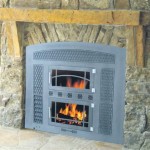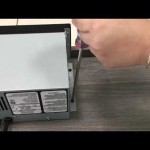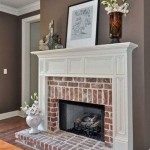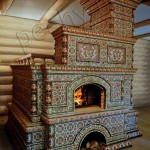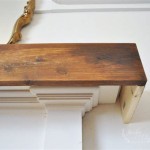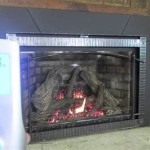Replacement Fireplace Insert Surround: Enhancing Aesthetics and Functionality
A fireplace insert is a self-contained heating appliance designed to be installed within the existing firebox of a traditional fireplace. While the insert itself focuses on efficient heating, the surround plays a crucial role in both the aesthetic integration of the insert and the effective containment of heat. Over time, or due to changes in décor or insert upgrades, a replacement fireplace insert surround may become necessary. This article explores various aspects of replacement fireplace insert surrounds, including their function, available materials, installation considerations, and common issues necessitating replacement.
The primary function of a fireplace insert surround is to bridge the gap between the insert and the existing fireplace opening. This gap is almost always present due to the insert being smaller than the original firebox. The surround creates a finished look, concealing the raw edges of the fireplace opening and presenting a cleaner, more visually appealing appearance. Furthermore, the surround directs heat radiating from the insert into the room, preventing it from being lost into the masonry of the fireplace. A well-designed surround can significantly improve the heating efficiency of the insert by reflecting and distributing heat more effectively.
In addition to aesthetic and functional benefits, a surround also serves as a safety feature. It can help to protect the surrounding wall material from excessive heat, reducing the risk of fire hazards. A properly installed surround also ensures that the insert is securely positioned within the fireplace opening, minimizing any potential movement or instability.
Key Functions of a Fireplace Insert Surround
The benefits of a fireplace insert surround extend beyond merely filling a space. These attachments contribute significantly to the overall performance and appeal of the fireplace system.
Aesthetic Enhancement: The surround dramatically improves the visual appearance of the fireplace. It allows for customization to match the existing décor of the room, utilizing different materials, finishes, and styles. By covering the unfinished edges of the fireplace opening and providing a seamless transition between the insert and the surrounding wall, the surround creates a polished and professional look.
Improved Heat Distribution: A well-designed surround enhances the efficiency of the fireplace insert by directing heat into the room. The surround acts as a reflector, bouncing radiant heat away from the masonry of the fireplace and into the living space. This can lead to a more comfortable and evenly heated room, especially in larger spaces.
Safety and Protection: The surround provides a crucial barrier between the heat of the insert and the surrounding wall. This minimizes the risk of overheating the wall material, which can cause damage or even pose a fire hazard. Furthermore, the surround helps to secure the insert within the fireplace opening, preventing movement and ensuring stability.
Common Materials for Fireplace Insert Surrounds
The selection of materials for a replacement fireplace insert surround involves considering both aesthetic preferences and performance characteristics. Each material offers a unique set of advantages and disadvantages.
Steel: Steel is a common and durable material for fireplace insert surrounds. It is relatively inexpensive, readily available, and offers excellent heat resistance. Steel surrounds can be powder-coated or painted to match the décor of the room. Stainless steel is another option, providing improved corrosion resistance and a modern aesthetic.
Cast Iron: Cast iron surrounds offer a classic and traditional look. Cast iron retains and radiates heat well, contributing to the overall heating efficiency of the fireplace insert. However, cast iron is heavier than steel and may require additional support during installation. It can also be more susceptible to rust if not properly maintained.
Stone: Stone surrounds, such as granite, marble, or slate, provide a luxurious and natural appearance. Stone is durable, heat-resistant, and adds a touch of elegance to any fireplace. Stone surrounds tend to be more expensive than steel or cast iron and require professional installation due to their weight and the precision needed for a proper fit.
Wood: While wood can be used for fireplace surrounds, it is generally used for decorative elements surrounding the firebox opening, not directly adjacent to the insert itself. Due to the proximity to heat, combustible materials like wood must be carefully positioned and insulated to prevent fire hazards. Wood surrounds often incorporate a non-combustible material, such as stone or tile, directly around the insert opening.
Factors Leading to Fireplace Insert Surround Replacement
Numerous factors can lead to the necessity of replacing a fireplace insert surround. Understanding these reasons can help homeowners proactively address potential issues and maintain the functionality and aesthetics of their fireplace system.
Damage: Physical damage, such as dents, scratches, or cracks, is a common reason for surround replacement. This damage can occur due to impact, wear and tear, or improper handling. Depending on the severity of the damage, repair may not be feasible or cost-effective, making replacement the more practical option.
Rust or Corrosion: Surrounds made of steel or cast iron are susceptible to rust and corrosion, especially in humid environments. Rust can weaken the material and detract from the appearance of the surround. While minor rust can sometimes be removed and treated, extensive corrosion often necessitates replacement.
Aesthetic Updates: Changes in décor or personal preferences can prompt homeowners to replace their fireplace insert surround. A new surround can update the look of the fireplace and make it a more cohesive element within the room's design.
Insert Upgrades: When upgrading to a new fireplace insert, the existing surround may no longer be compatible or aesthetically pleasing. The dimensions of the new insert may differ from the old one, requiring a different surround to properly fill the gap and achieve a polished look.
Poor Installation: A poorly installed surround can cause various problems, including uneven heat distribution, instability, and an unsightly appearance. If the surround is not properly fitted or secured, it may need to be replaced and reinstalled correctly.
Selecting and installing a replacement fireplace insert surround requires meticulous attention to detail and consideration of various factors. By understanding the functions, materials, and potential issues associated with surrounds, homeowners can make informed decisions and ensure a safe, efficient, and aesthetically pleasing fireplace system.

Diy Fireplace Makeover With High Heat Paint Jessica Welling Interiors

Fireplace Insert Guide Fireplaces Direct Learning Center

How To Remove A Fireplace Surround Direct Fireplaces

How To Modernize And Update A Gas Fireplace We Love Fire

Fireplace Fix Easy Tips To Renovate Retrofit And Replace An Old Fire Touchstone Home S Inc

How To Remove An Old Fireplace Surround Merrypad

Fireplace Inserts Everything You Need To Know Full Service Chimney

Best Surround For Electric Fireplace Insert Is 36 42 Zc In Usa

Custom Fireplace Surround Refacing Many Surrounds To Choose From
How To Install An Electric Fireplace Insert
Related Posts

